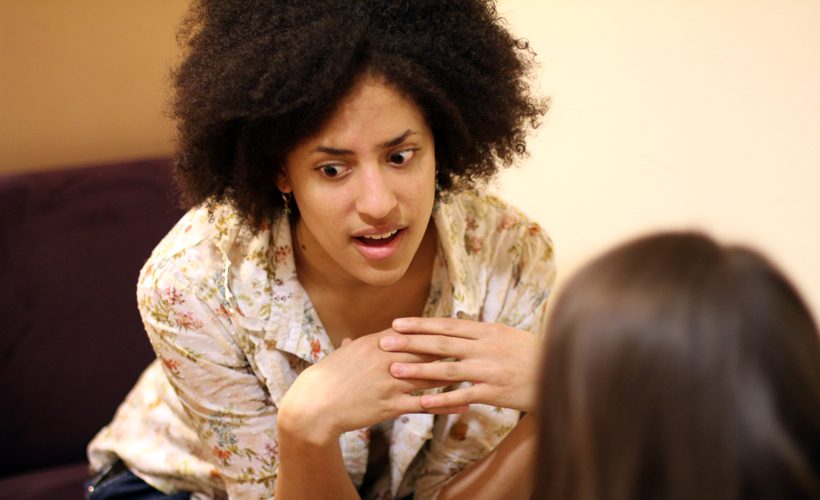A celebration broke out at a brunch in New York on Saturday after Julie Hern, 26, successfully told a story where “…you didn’t have to be there.” Friends rejoiced when Julie finished the story without an awkward pause followed by, “I guess it was funny at the time.”
“It’s a big step for her,” says Kara Gauthier, Julie’s best friend since high school. “We finally got what she was talking about and why the story was funny.”
“It got so bad I didn’t invite her to my wedding,” adds Kara. “I didn’t want my guests to suffer through one of Julie’s vague descriptions of her boyfriend Jake ‘just being goofy.’”
“I’ve been bringing Sudokus and Rubik’s cubes to our coffee dates to make her steady stream of unrelatable anecdotes more bearable,” says coworker Soniah Edens. “But maybe now I won’t have to anymore.”
After Julie told a meandering story of how she one time when she was 12 she said “cornpop” instead of “popcorn” at summer camp in New Hampshire, her friends took action and staged an intervention.
Since then, Julie has been attending verbal therapy with Dr. Garcia Guillermo, a professor of linguistic studies and storytelling at New York University. “She’s been making big strides,” confirms Dr. Guiellermo, “She’s learning the different rules of verbal etiquette and that stories should have a point to them that is made clear to the listener.”
“Her problem is more common than people think,” says Dr. Guillermo. Guillermo suggests a twelve-step approach that includes avoiding unnecessary details, i.e.: what day of the week it was, or if they were wearing a sweater or sweatshirt, to getting to the “point” of the story in a reasonable amount of time. Guillermo describes “the point” of a story as “the moment when listeners have some response to what you’re saying aside from just their eyes being glazed over or looking at their phones.”
Kara and Julie have a brunch date next weekend with high hopes for a productive conversation.




